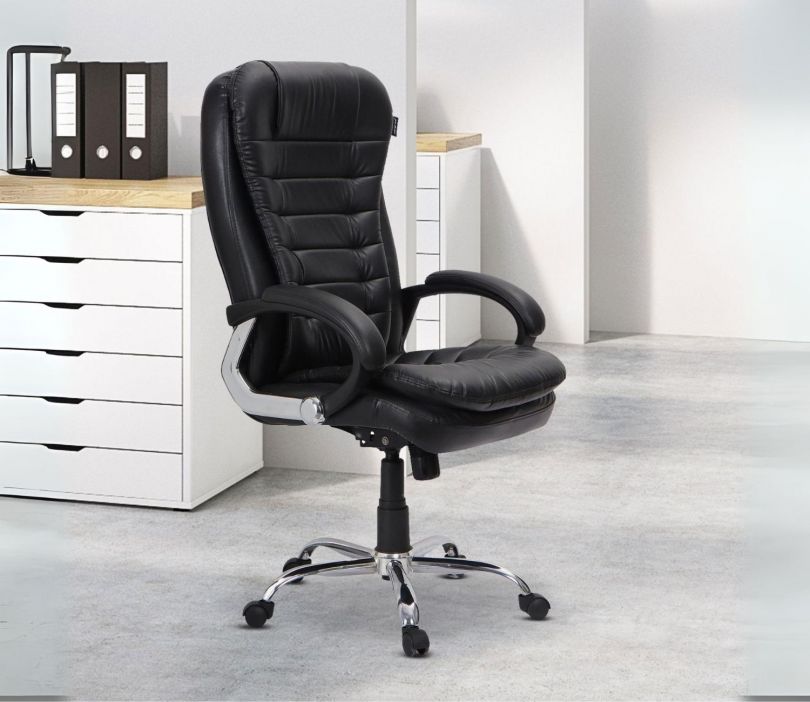An ergonomic office chair is one of the most important investments in your workspace. Whether you work from home or in a corporate setting, a well-maintained office chair not only supports your posture but also enhances productivity and comfort. However, without regular upkeep, even the best chairs can lose their functionality and appeal. To help you get the most out of your seating, here are some practical tips on how to maintain your office chair for long-term comfort.

1. Clean Regularly to Preserve Appearance and Hygiene
Dust, food crumbs, and spills can build up over time, affecting both the look and hygiene of your chair. Here’s how to clean effectively:
- Fabric chairs: Vacuum weekly and use a mild upholstery cleaner monthly.
- Leather chairs: Wipe with a damp cloth regularly and apply a leather conditioner every few months.
- Mesh chairs: Use a soft brush or vacuum to remove dirt and maintain breathability.
Always refer to the manufacturer’s instructions for cleaning to avoid damaging the materials.
2. Adjust Components Periodically
Your office chair is designed with multiple adjustable components to offer ergonomic support. Over time, the height, tilt, armrests, and lumbar support settings may shift from their optimal position.
- Recheck and readjust the settings every few weeks.
- Make sure your knees are at a 90-degree angle, feet flat on the floor, and back fully supported.
- Adjust armrests to keep your shoulders relaxed and elbows close to your body.
Proper alignment reduces strain and enhances daily comfort.
3. Lubricate Moving Parts
Squeaky noises and stiff movements can indicate friction in the moving parts of your chair.
- Apply a silicone-based lubricant to the wheels, tilt mechanism, and height adjustment cylinder every 6 months.
- Avoid oil-based lubricants, which may attract dust or stain the flooring.
Keeping these parts well-oiled ensures smooth operation and prevents premature wear.
4. Inspect and Tighten Screws
With daily use, screws and bolts can loosen and compromise the chair’s stability.
- Inspect all visible screws under the seat, armrests, and base monthly.
- Tighten any loose fittings with a screwdriver or Allen wrench as needed.
This simple step prevents structural damage and maintains the integrity of your chair.
5. Protect the Wheels and Base
The wheels of your office chair are constantly in motion, making them susceptible to wear and tear.
- Clean the casters by removing any debris, hair, or dirt lodged inside.
- Use a soft brush or compressed air to keep them rolling smoothly.
- If the wheels are damaged or stuck, consider replacing them with high-quality casters.
Using a chair mat can also protect both your flooring and the base of the chair from damage.
6. Avoid Overloading and Misuse
Office chairs have weight limits and are designed for seating—not for leaning back excessively, standing, or using as a ladder.
- Stay within the manufacturer’s recommended weight capacity.
- Use the chair only as intended to prolong its lifespan.
Gentle, mindful use is key to maintaining its ergonomic functions.
7. Schedule Annual Maintenance
Just like other essential equipment, an annual maintenance check can be highly beneficial.
- If your office has a facility team, request an annual inspection.
- For home users, set a calendar reminder to perform deep cleaning and check all functions.
Proactive care ensures that your chair continues to support your comfort and posture for years to come.
Final Thoughts
Maintaining your office chair doesn’t require much time but pays off in the long run. Regular cleaning, adjusting, lubricating, and checking for wear will preserve both its appearance and performance. By following these simple maintenance practices, you’ll enjoy long-term comfort, support, and productivity in your work environment. A well-maintained chair isn’t just furniture—it’s an essential partner in your daily success.


